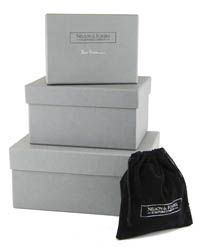Rhino & Hippo Bronze Sculptures
-
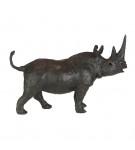
Bronze Rhino Sculpture: Bull Rhinoceros by Jonathan Sanders **New!**
-
Edition:250
-
Size in cm:19w x 12h x 6d cm
Including VAT: $888.75 Excluding VAT: $740.62 -
-
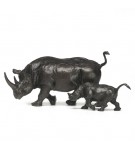
Bronze Rhino Sculpture: Rhinoceros Mother and Baby by Jonathan Sanders
-
Edition:250
-
Size in cm:17w x 9h x 8d and 10w x 5h x 3d cm
Including VAT: $881.86 Excluding VAT: $734.88 -
-
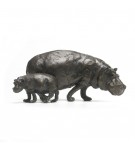
Bronze Hippo Sculpture: Hippopotamus Mother and Baby by Jonathan Sanders
-
Edition:250
-
Size in cm:16w x 8h x 7d and 8w x 5h x 4d cm
Including VAT: $881.86 Excluding VAT: $734.88 -
-
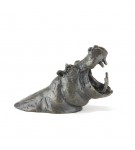
Bronze Hippo Sculpture: Fighting Hippopotamus by Jonathan Sanders
-
Edition:250
-
Size in cm:12w x 7.5h x 5d
Including VAT: $385.81 Excluding VAT: $321.51 -
-
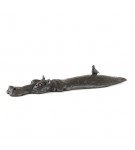
Bronze Hippo Sculpture: Wallowing Hippopotamus by Jonathan Sanders
-
Edition:250
-
Size in cm:19.5w x 3h x 5d
Including VAT: $385.81 Excluding VAT: $321.51 -
-
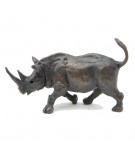
Bronze Rhino Sculpture: Rhinoceros Maquette by Jonathan Sanders
-
Edition:500
-
Size in cm:8w x 5h x 3d cm
Including VAT: $144.68 Excluding VAT: $120.57 -
-
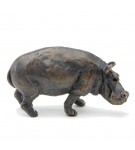
Bronze Hippo Sculpture: Hippopotamus Maquette by Jonathan Sanders
-
Edition:500
-
Size in cm:7w x 4h x 3d cm
Including VAT: $144.68 Excluding VAT: $120.57 -
Bronze Rhinoceros and Hippopotamus sculptures by Jonathan Sanders – proving that biggest can be best.
The Rhinoceros is the tank of the animal kingdom. The white rhino measures 5 – 6ft tall a the shoulder and weighs between 1.8 tonnes and a staggering 2.7 tonnes, making it truly one of the most awe inspiring land animals alive.
Jonthan Sanders’s bronze sculpture of a (white) Rhinoceros Mother and Baby weights a suitably hefty 1.7kg (plus the baby), making it 1/1588th of the weight of the real thing! It has proved popular with collectors and makes an impressive gift.
In 2015, we released his delightful miniature ‘Rhinoceros Maquette’, the perfect small gift for the rhinoceros lover in your life.
The white rhino got its name from the Afrikaans word describing its mouth, “weit,” meaning “wide”. The word “weit” used to describe the animal by locals was misinterpreted by English settlers and thought to be the word “white.” Square-lipped rhinoceros is also a common name for the white rhino because the upper lip appears to be angular, lacking the “hook” shape of other species.
The black rhino, which is not black at all, probably derives its name as a simple distinction from the white rhino (itself a misnomer) and also from the dark-coloured local soil that covers its skin after it emerges from wallows. The black rhino is also known as the hook-lipped rhino, on account of its pointed upper lip which is adapted for feeding from trees and shrubs.
All species of rhinoceros are endangered and subject to both keen conservation efforts and sadly, continued poaching. Several customers have chosen to add a rhinoceros sculpture to their collection as a family heirloom in case conservation efforts do not secure the future of the species.
Hippopotamuses are a firm favourite with collectors of the species and bronze sculpture alike. Jonathan Sanders’s Hippopotamus Mother and Baby is a gorgeous study of a pair of these rarely seen animals sharing a tender moment.
2015 saw the release of Jonathan Sanders’s miniature ‘Hippopotamus Maquette’, which proved an instant hit and gives the perfect excuse to spoil your favourite Hippo collector.
Despite its physical resemblance to a pig and other ungulates and being given the name ‘hippo’, which means horse, the hippopotamus’s closest living relatives are actually whales and porpoises.
Although the average adult hippopotamus weighs one and a half tonnes and has a very stocky torso on short legs, it can reach speeds on land of 19mph, allowing it to easily out run a human. This ability, combined with an aggressive an unpredictable nature, perhaps surprisingly ranks the hippopotamus as one of the most dangerous animals in the whole of Africa.
During the day, much of the hippopotamus is submerged under water or mud and even reproduction and giving birth occur in water. At dusk they emerge to travel up to ten kilometres inland graze on grass and whilst doing so are not territorial, despite being fiercely so when in the water.




